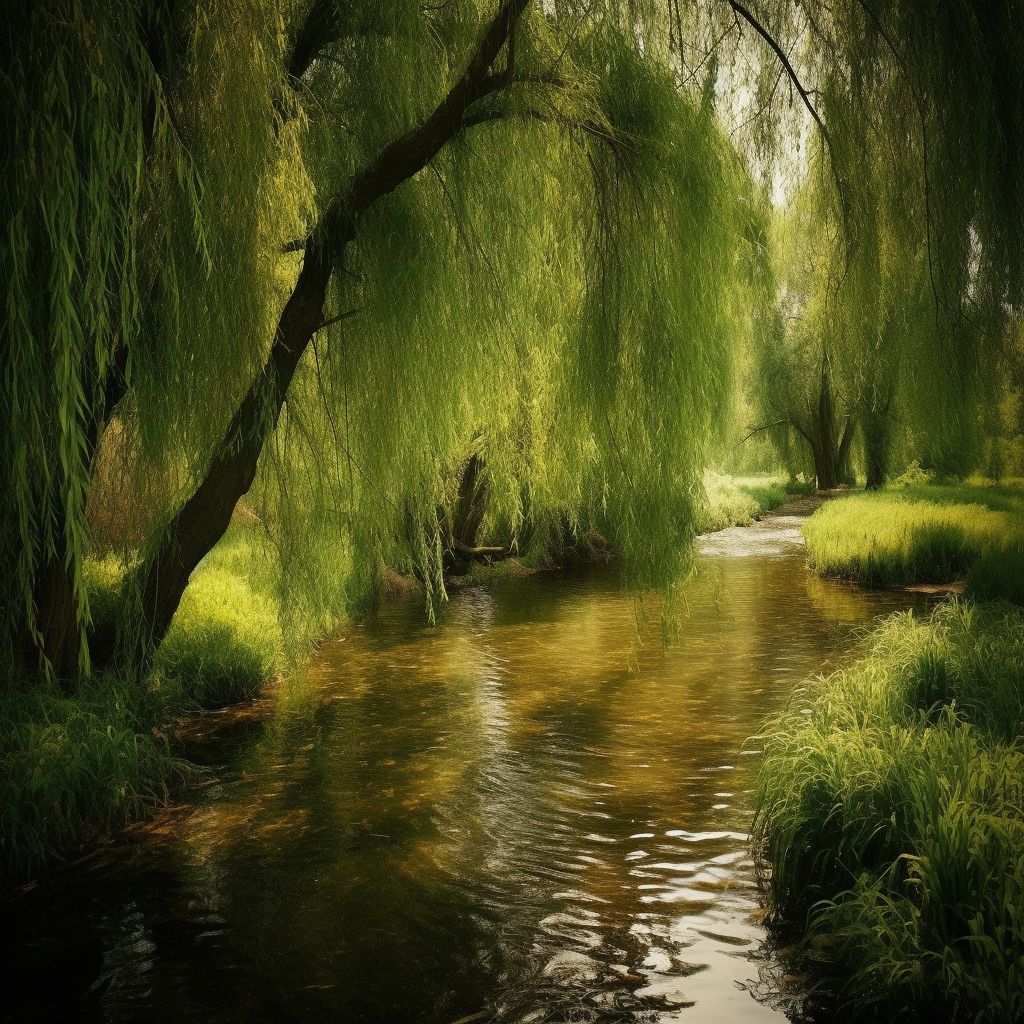Willow
Willow trees, belonging to the genus Salix, are a diverse group of deciduous trees and shrubs found throughout the United States. With over 400 species worldwide and numerous hybrids and cultivars, willows are well-known for their graceful appearance, distinctive growth habits, and ecological importance. In this article, we will explore the characteristics of willow trees and discuss some of the most prominent species found across the North American continent.
Description and Distribution
Willow trees are characterized by their slender, flexible branches and simple, lanceolate leaves with finely serrated margins. They are typically fast-growing and can range in size from small shrubs to towering trees, depending on the species. Willows are often associated with moist, wetland habitats and can be found growing along riverbanks, lake shores, and marshy areas.
Willow trees are native to a wide range of climates and habitats across the United States, from the cold, northern reaches of Alaska and Canada to the warmer climates of the southern United States. They are especially diverse in temperate regions and can be found in various ecosystems, including forests, grasslands, and wetlands.
Prominent Willow Species
Black Willow (Salix nigra)
Native to eastern North America, the black willow is a medium-sized tree that typically grows along riverbanks and in wetland areas. It is characterized by its dark, furrowed bark and narrow, elongated leaves. The wood of the black willow is lightweight and relatively soft, making it a popular choice for the construction of crates, boxes, and other wooden items.
White Willow (Salix alba)
Originating from Europe and western Asia, the white willow has been widely cultivated in the United States for its ornamental and practical uses. It is a large tree, often reaching heights of 60 to 100 feet, with distinctive silvery-white leaves and bark. The wood of the white willow is strong and durable, making it suitable for various applications, including furniture and tool handles.
Weeping Willow (Salix babylonica)
The weeping willow is a well-known ornamental tree, valued for its graceful, drooping branches and distinctive growth habit. Native to China, it has been widely cultivated in the United States for its beauty and adaptability to various climates and soil conditions. The wood of the weeping willow is relatively soft and lightweight, making it less suitable for construction purposes but popular for carving and other artistic applications.
Pussy Willow (Salix discolor)
The pussy willow is a small to medium-sized shrub or tree native to North America, known for its distinctive, fuzzy catkins that appear in early spring before the leaves emerge. It is often found growing in wetlands and along waterways and is a popular choice for ornamental plantings and wildlife gardens. The wood of the pussy willow is lightweight and relatively soft, making it suitable for various small-scale woodworking projects.
Ecological Importance
Willow trees play a vital role in their ecosystems, providing habitat and food for a variety of wildlife species. The leaves, twigs, and bark of willow trees are an important food source for various herbivorous animals, including deer, beavers, and rabbits. In addition, willows provide nesting sites and shelter for numerous bird species and support a diverse community of insects, including butterflies, moths, and bees.
Willows are also valuable for their ability to stabilize soil and prevent erosion in riparian and wetland areas. Their extensive root systems help to hold soil in place, while their dense growth provides a natural barrier against wind and water erosion.
Conclusion
With their distinctive appearance, adaptability to various habitats, and ecological significance, willows have become an integral part of the North American landscape. They not only enhance the beauty of our natural environments but also contribute to the health and stability of ecosystems in which they reside. By providing food and shelter for wildlife, stabilizing soil, and preventing erosion, willow trees demonstrate their importance in maintaining the balance of our natural world. As we continue to study and appreciate these remarkable trees, we can gain a deeper understanding of their role in our ecosystems and the vital contributions they make to our planet's overall health and well-being.

